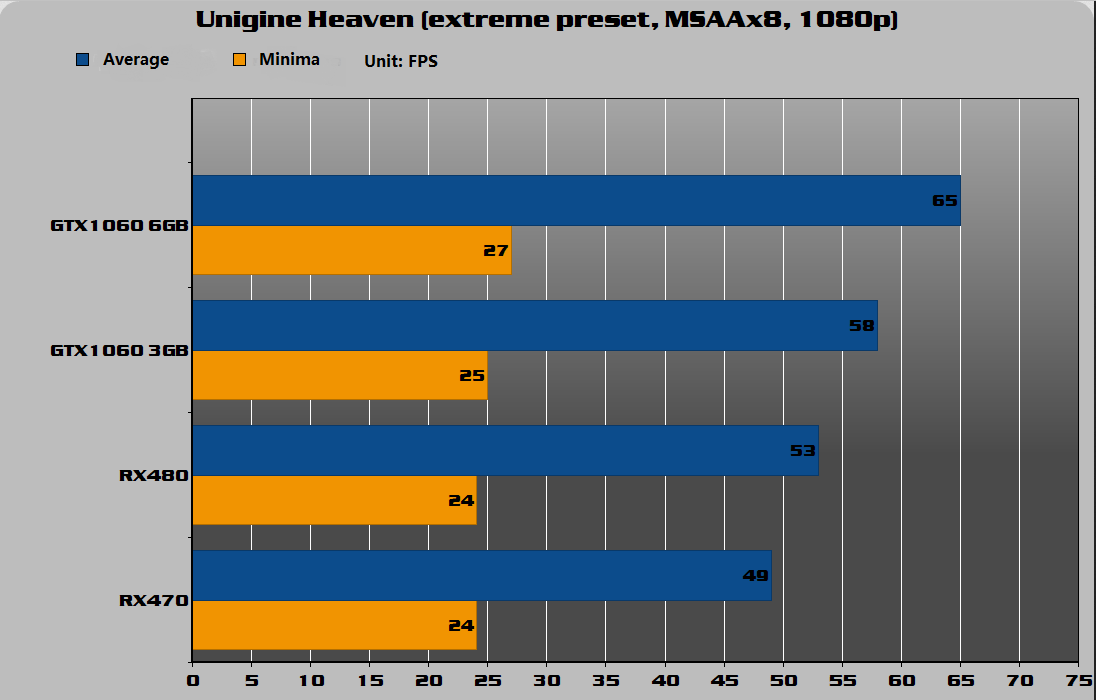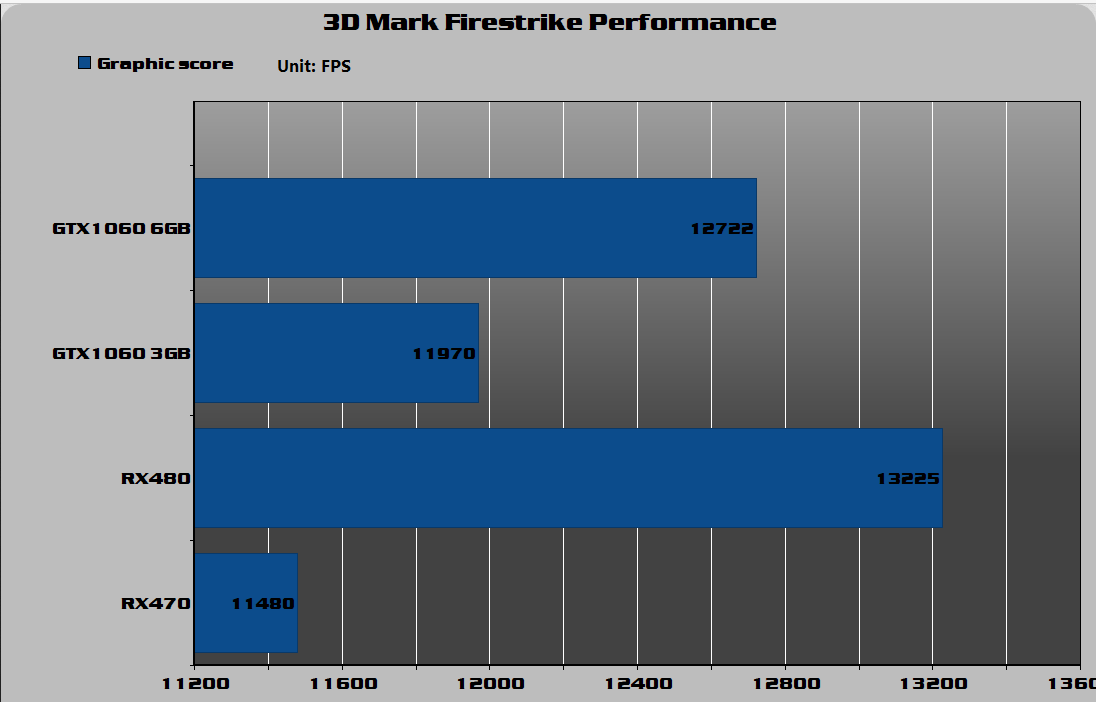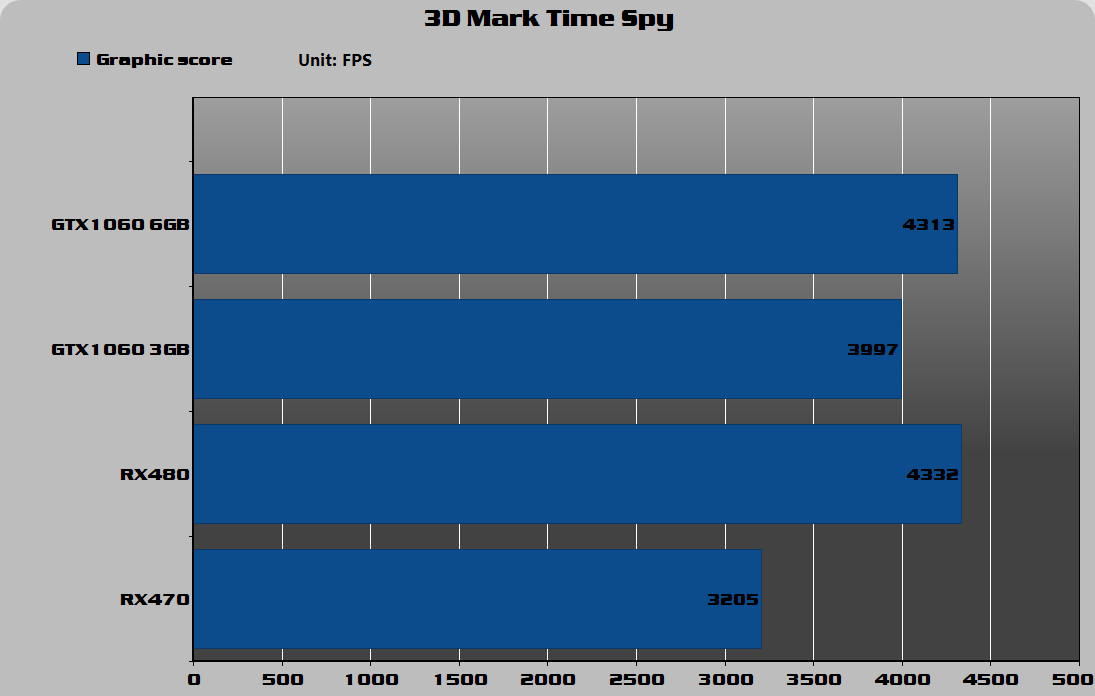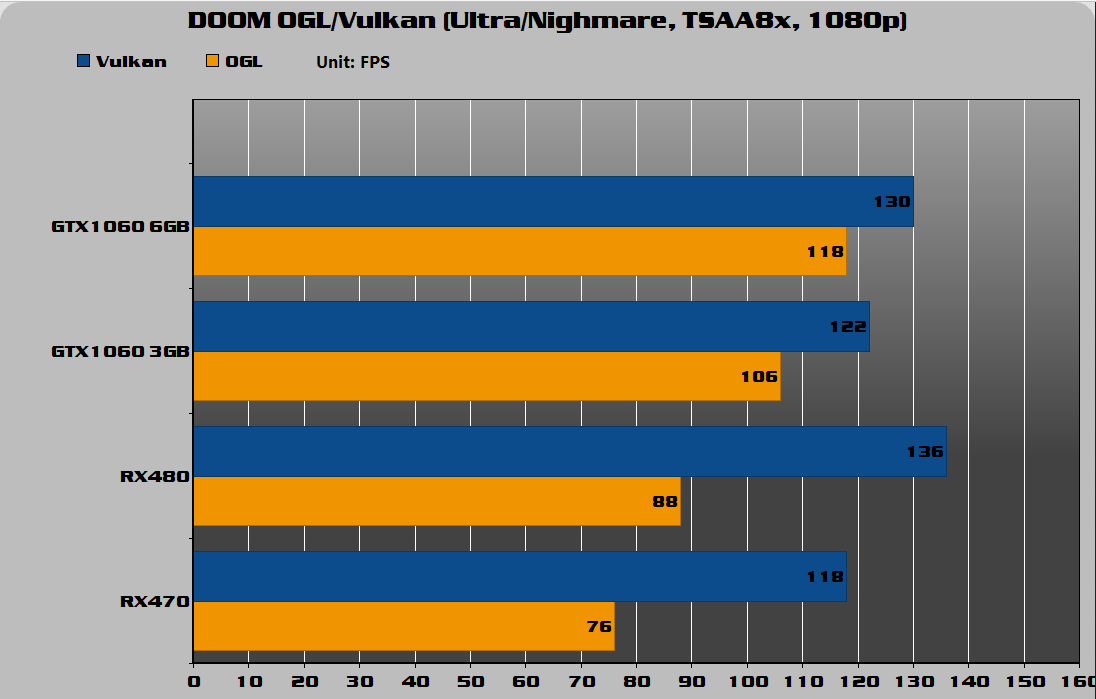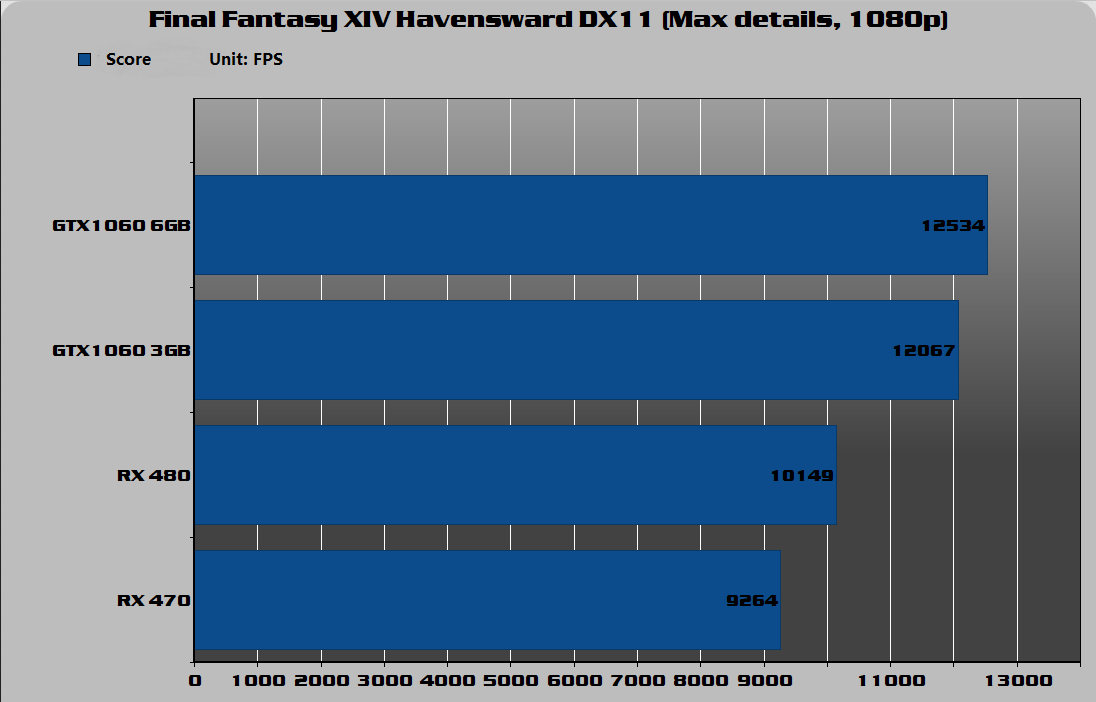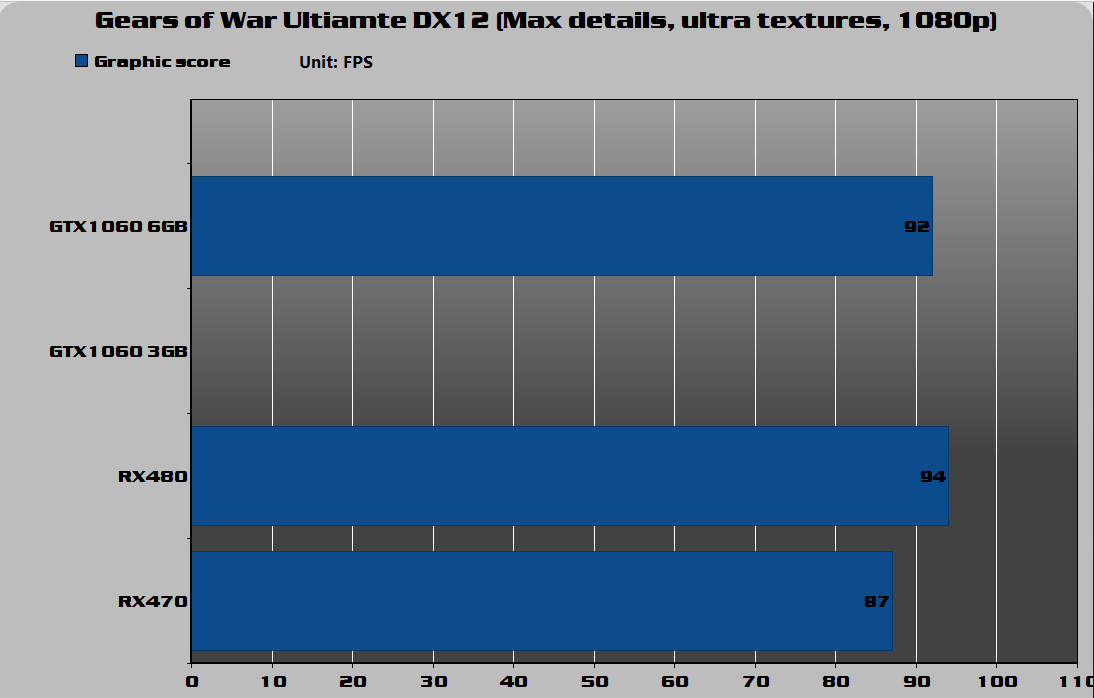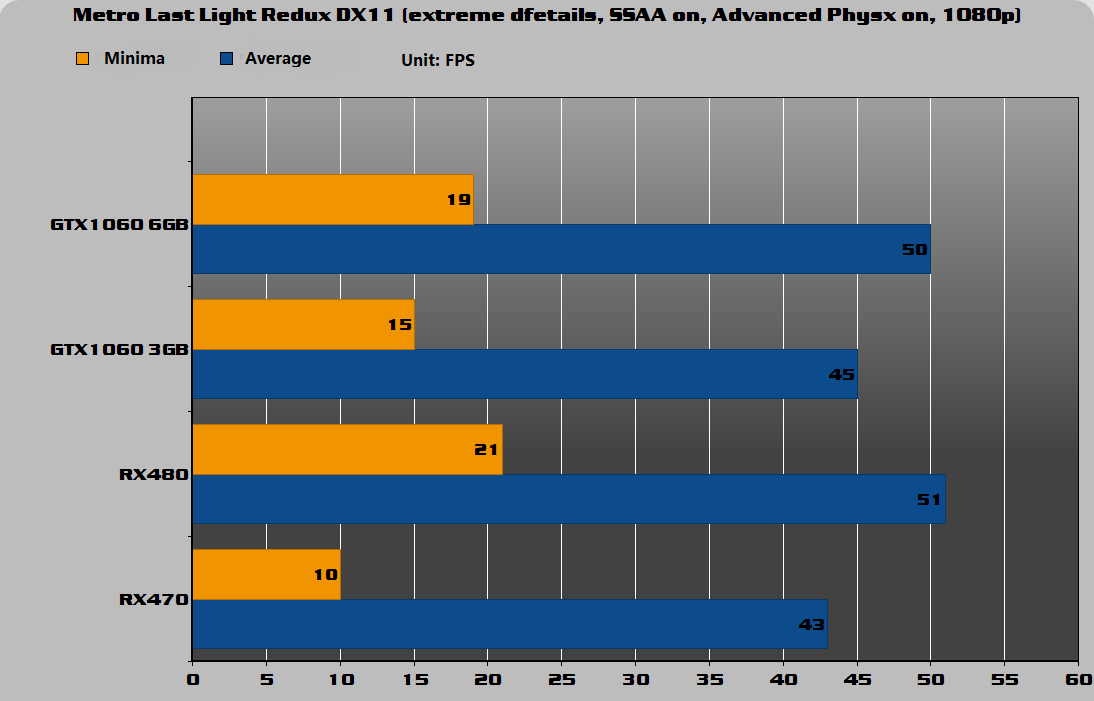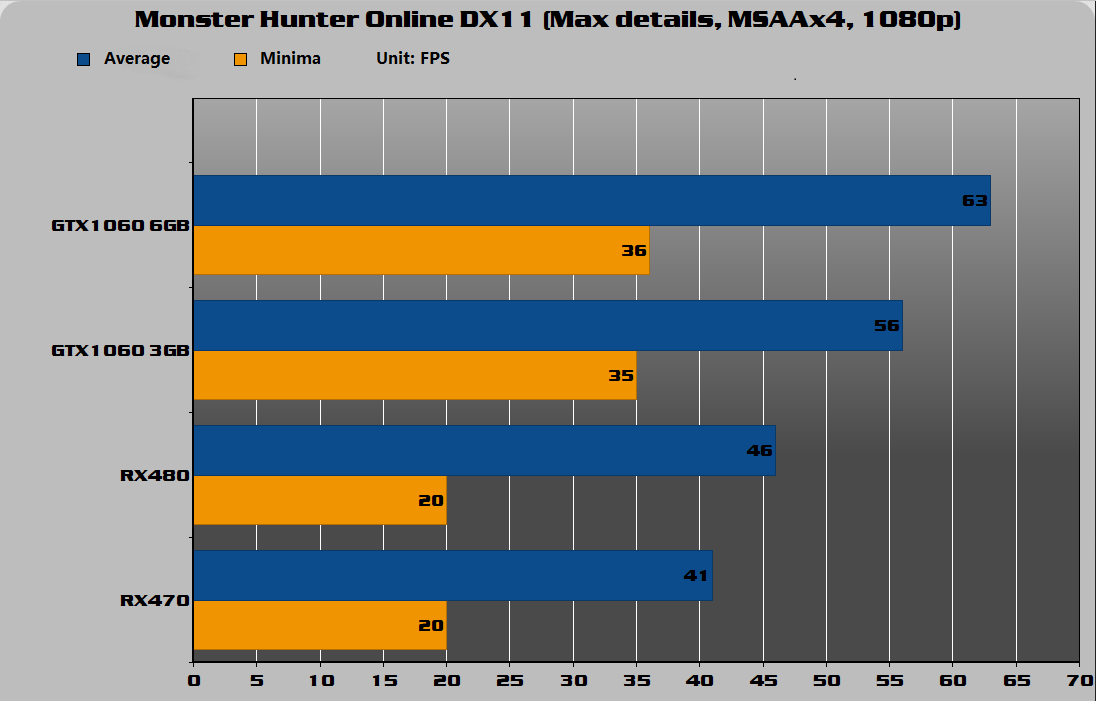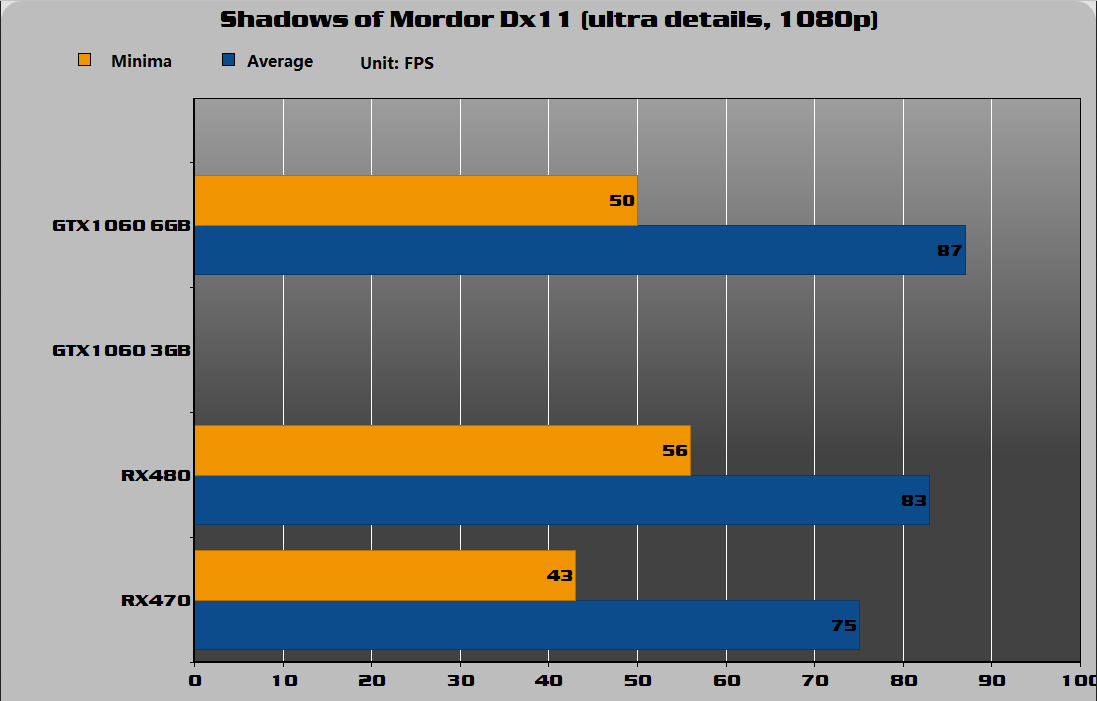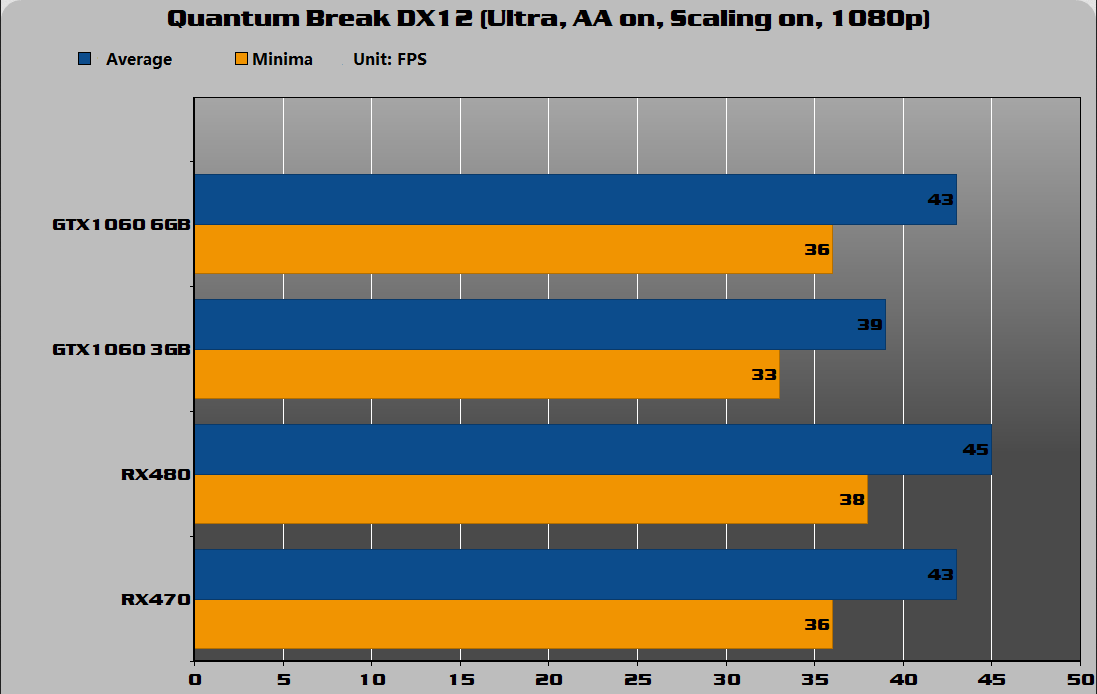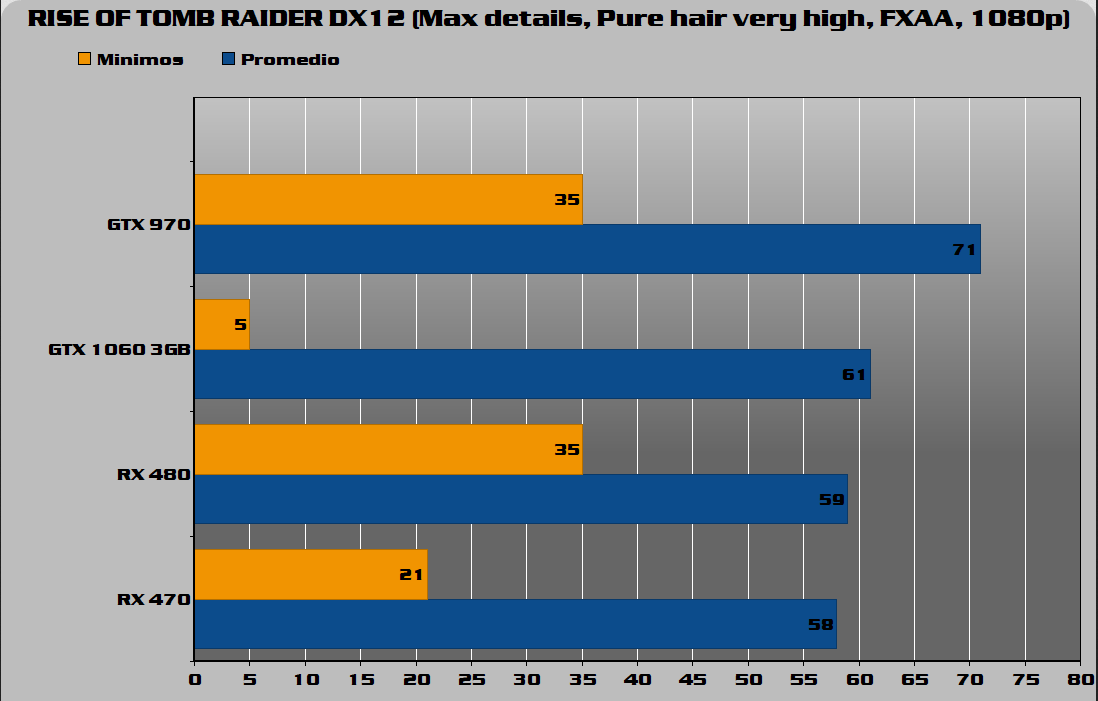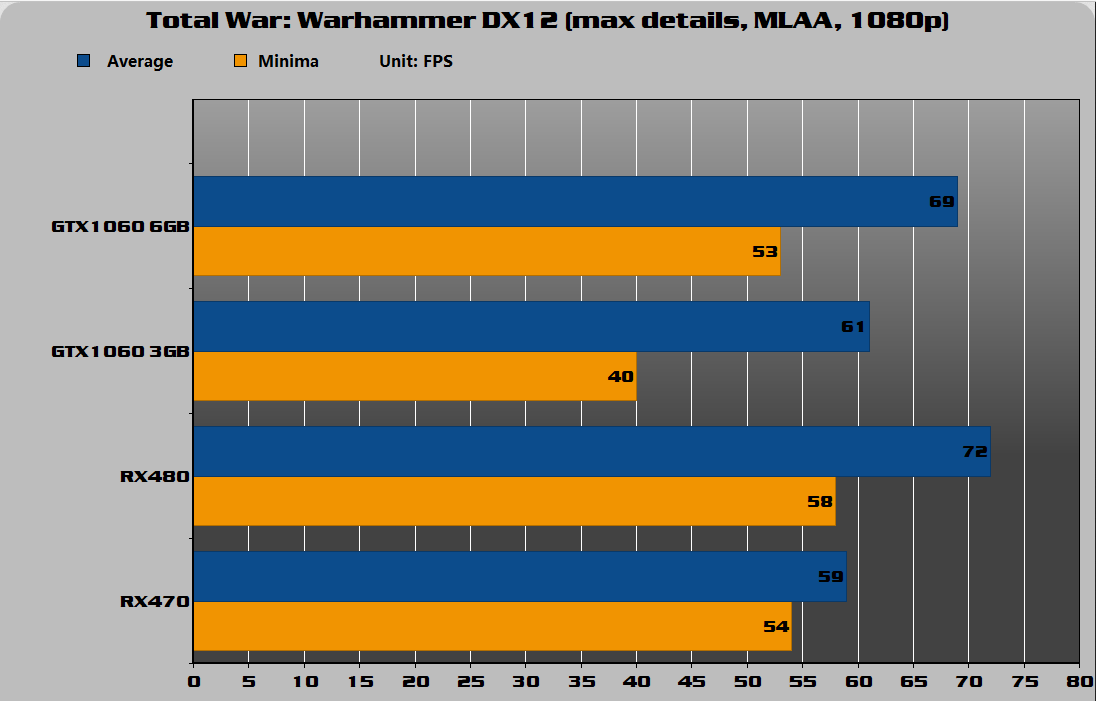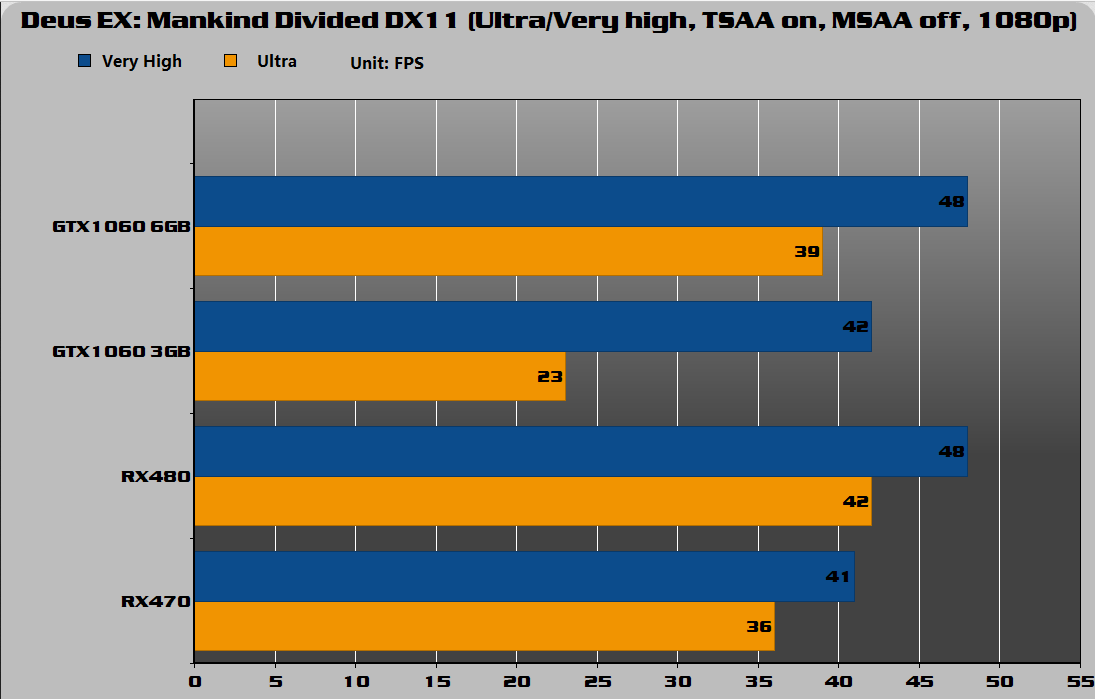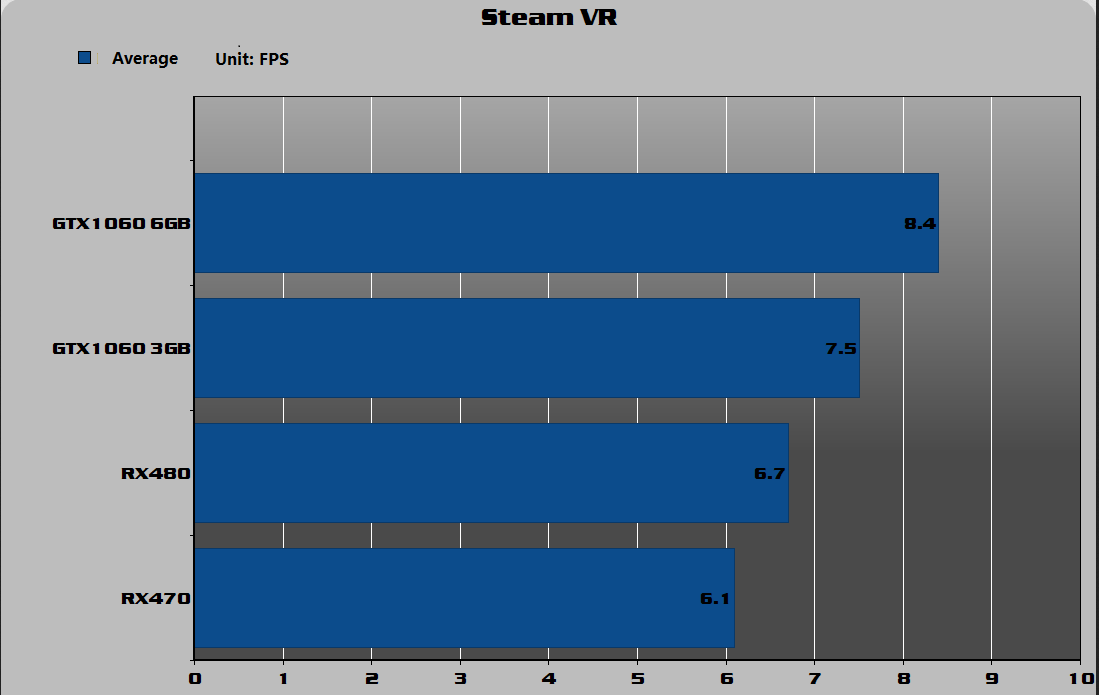We faced off the representatives of Nvidia’s and AMD’s mid-range to evaluate their performance and quality/price ratio.
The best cards between 200 and 400 dollars
Usually the launch of new graphics cards make glances go towards the high-end, to those outrageous numbers, monstrous frame rates or resolutions within the reach of very few, but it is in the mid-range, where the vast majority of buyers aim for because it is where the best price/performance ratio on the market is, in that range between 200 and 300 $. That is why we are going to highlight and face off with one another representatives from both Nvidia and AMD in the range: the GTX 1060 6GB, GTX 1060 3GB, RX 480 8GB and RX 470 4GB.
The contenders
On the green brand’s side, we have 2 versions of the same card, the GTX 1060 in its 6GB and 3GB models, but they are not exactly the same card as we can see below.
The 3GB model is between 190$ and 260$ and the 6GB is between 250$ and 360$, depending on the manufacturer, its heat dissipation and whether it’s factory overclocked or not. The 6GB model has 1280 Cuda cores, while the 3GB model “only” has 1152. On the other hand both maintain the same frequencies, 1709 core and 8GHz memory, and the same BUS and bandwidth, 192 bits and 192GB/s, as well as 48 ROPs.
In contrast at AMD we are dealing with two different models, although both of the same architecture, Polaris 10. The RX 470 costs between 200 and 250 dollars while the RX480 (in its 8GB model) costs between 260 and 350 dollars. The RX470 has 2048 stream processors, 4 and 8GB versions, a frequency of 1206 mHz core and 6.6 gHz memory, 256 bits BUS and 211GB/s, with 32ROPS. Meanwhile the RX480 has 2304 stream processors, 4 and 8GB versions, a frequency of 1266 mHz core and 8 gHz memory with a 256bits interface, 256GB/s bandwidth and 32ROPS.
The models chosen for the Polaris have been the 4GB 470 and the 8GB 480.
The Arena
The hardware used was mid-range as well, an i5 2500K with a slight overclock to 3.8GHz, 16GB of RAM at 1600mhz and a supply of 520w. In tests we used the Nvidia drivers 372.54 and AMD drivers 16.7.3. There are some games where the 1060 3GB failed to pass the test with the same settings as the rest due to limitations of VRAM, in these tests the result will be zero because the game could not start.
We are using the usual Benchmarks and games since they are reliable, and favor both brands.
We also incorporated the new Deus EX: Mankind Divided, being an ideal game to test our hardware.
The Battle
Unigine Heaven (Extreme preset, msaa x 8, 1080P)
A fairly standard result in this test, since it uses a lot of tessellation the Nvidia cards stand out. The VRAM is not decisive in this test.
3D MARK Firestrike Performance
Firestrike, the world’s most used graphics test so far shows a slightly better performance for the 480, with the 2 Nvidia cards lagging behind and the 470 coming last, but pretty close.
3D Mark Time Spy
On the new 3Dmark test that replaces the Firestrike we can see an almost identical result to the previous test, but with a very close outcome between the big 2.
DOOM OGL/Vulkan (Ultra/Nighmare, TSAA8x, 1080P)
The latest game from id Software, the brutal DOOM, shows very interesting results. In OpenGL, the original version of the title, the results are fairly common, with both Nvidia cards in the head but if we use Vulkan, AMD shows a large improvement putting the RX 480 ahead, although just by a little.
Final Fantasy XIV Havensward DX11
Square Enix’s MMO is quite demanding on the graphics, and it benefits Nvidia for its use of tessellation.
Gears of War Ultiamate DX12
Before GOW4 arrives in a few weeks, Epic left us this appetizer, a game that works somewhat better in AMD. We see a very tight result, but the 1060 3GB couldn’t pass the test with the same settings as the rest since it crashed the PC for lack of VRAM.
Metro Last Light Redux DX11
Although it’s been out for a while, Metro Last Light it is still one of the most demanding titles found on PC, and its Redux version, even more. The game favours AMD slightly, and we can see how the RX480 wins by a nose, or in more technical terms, by a frame.
Monster Hunter Online DX11
The incursion of Capcom’s saga on PCs was done with latest CryEngine and exhibits demolishing graphics, with much emphasis on DX11 effects like tessellation and hair physics. It favours Nvidia, and we see them take a great advantage.
Shadows of Mondor DX11
Another game where the little 1060 failed to run the settings of the test, which includes the HD texture pack and ambient occlusion on ultra. The results are very evenly matched.
Quantum Break DX12
The latest from Remedy is a whole graphics benchmark, it performs better in AMD, but we see the results are tight.
Rise of TOMB Raider DX12
Lara’s adventure powered by DX12 is another classic in the commonly used graphic benchmarks. We can appreciate how the 3GB 1060 has problems with the minimum fps, which also penalizes the average performance. It is also surprising the result of 470, which is very close to the 480, almost equaling it.
Total War: Warhammer
Another champion of the DX12. We see very close results, although the RX480 takes the victory.
Deus EX: Mankind Divided DX11
One of the latest releases and one of the most demanding games till date, with heavy use of tessellation and ambient occlusion. We tested it in ultra and very high, with the settings left untouched, with MSAA disabled as it completely drops the performance. We can see how the two AMD cards perform superbly well, no wonder this game is sponsored by AMD. The 1060 suffers greatly due to lack of VRAM, specially on ultra, as it has its RAM full throughout the test. The 6GB card does not fill it’s VRAM, but it’s affected more harshly on ultra, lagging behind the 480, while it ties to it when we put the settings on very high.
Steam VR
The Valve performance test to know if you are prepared for VR is not a graphic power test itself, but it indicates through estimates if we are prepared for VR. A result of more than 6 guarantees a full VR experience, and obviously the higher the result, the better the experience. Knowing this, we can tell that Nvidia cards are better prepared for virtual reality that the AMD cards reviewed here.
The verdict
We are facing the four graphics cards with the best price/performance ratio on the market, being possible to find any of them in the range from 200 to 300€. Both AMD cards behave really well, both are cool, efficient and very powerful, but Nvidia cards are a small step above in efficiency and performance. The jarring note it’s put by the 3GB 1060, with a price of 215 and the performance of a 480 it could be a monster, but the lack of VRAM means not being able to put everything on ultra this days, and that implies a shorter life expectancy.
Instead, the 4GB 470 was a real champion, it did not succumb even to the new Deus EX on ultra which marked RAM consumption peaks of over 4GB on its older sisters. One thing we would like to highlight is Wattman, the control and OC application included in AMD’s Crimson drivers, with which we can control the rate of frames per second, the fan speed curve, the card frequency, the voltage, the temperature threshold, etc… all in a very easy and visual way.
If we were to recommend a graphics card for less than 250 dollars today, that would be the RX470, the mid-range champion, and if it were instead for less than 300$, it would be the GTX 1060, the Queen of the mid-range.
EVGA GeForce GTX 1060 GAMING, Hardware recommended for less than 300$
The best
- Really good performance, it runs anything to date at 1080p.
- Cool and quiet, even the models with the most basic dissipation .
- A price unmatched in its range, for the most basic models..
- Very good OC capabilities.
The Worst
- The 3GB model is very limited by its memory, ideally they should have trimmed the chip instead of its memory.
- The best models from the best manufacturers are expensive.
RX 470, hardware recommended for less than 200$
The best
- Great Performance, specially on DX12/Vulkan.
- The improvement via drivers is quite noticeable since launch.
- It has memory to spare after meeting the needs of its target audience.
- Wattman, the control application of the graphics card that comes with the drivers, a great tool.
The Worst
- The more basic models, specially the reference ones, are very noisy/hot.
- Very low OC capabilities.
- On consumption per frame they are far behind Nvidia.
Read More:
Nvidia GTX 1060 vs GTX 960 vs GTX 970 vs GTX 980 vs GTX 1070 vs AMD RX 480 vs R9 390
NVIDIA GeForce GTX 1060 vs GTX 1070 vs GTX 1080 vs GTX TITAN X Pascal Specs and Benchmark Comparison
AMD Radeon RX 480 8GB vs Radeon RX 480 4GB Benchmark
